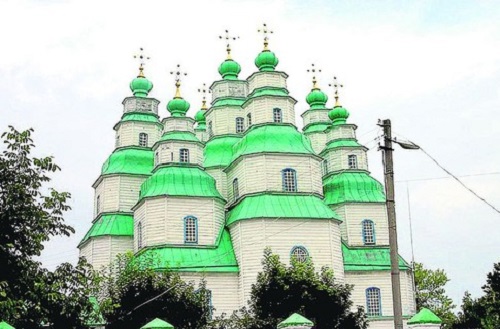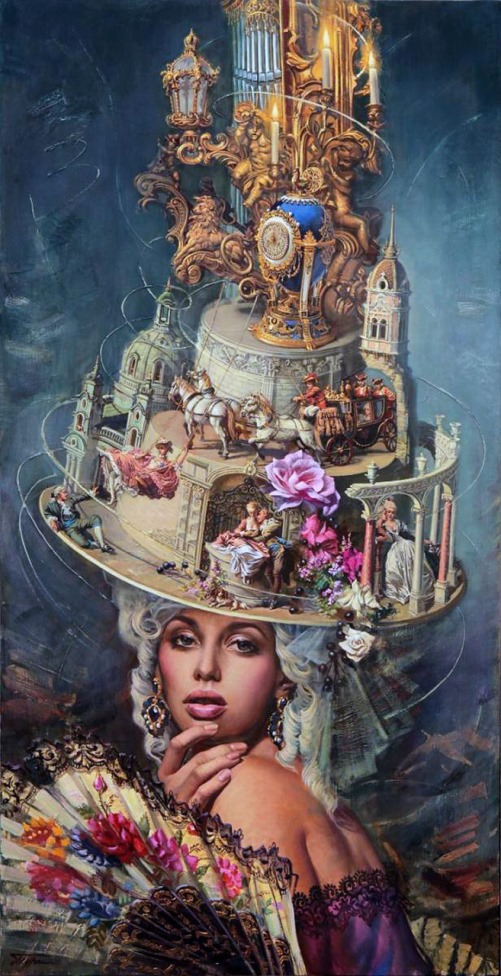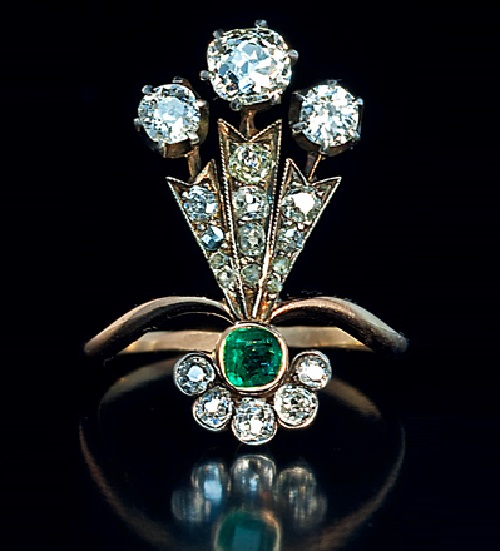Baroque jewelry art

Necklace. About 1670. Gold, emeralds, diamonds, enamel. Victoria and Albert Museum London. Baroque jewelry art
Baroque jewelry art
The art, which spans from about 1600 to 1775, 150 years, is one of the most versatile among the art eras. Noteworthy, the term “Baroque” came from Portuguese jewelers, meaning “irregular formed pearl”. Preceded by the renaissance, it succeeded by the neoclassicism style. In fact, differentiating early baroque works of art from the renaissance is not easy, especially for jewelry. First of all, because there is no cut-off date to separate the renaissance from the baroque period. According to experts, they divide Baroque period into three periods: Early Baroque (1600 to 1660), Late Baroque (1660 to 1725), and Rococo (1725 to 1775).

Snuffbox depicting allegorical female figure on a triumphal chariot. Mid-17th century Gold, London UK. The treasures of the galleon “Maravillas”, which sank in 1656 in the Bahamas

Goblet “Ship” by Hans Schlottheim, a goldsmith and clock maker who lived from 1547 to 1625. 16th century Gold. Germany. Belonged to the collection of curiosities of Czech King Rudolph II, Prague. Has the mechanism that drives the figures trumpeters. Imperial treasury Vienna
Baroque jewelry art

Jade Pitcher by Bohemian stone-cutter Ottavio Miseroni, Dutch Golden Age medalist, engraver and silversmith Adam van Vianen. Early 17th century, Kunsthistorisches Museum, Vienna, Austria. Was part of the private collection of Rudolf II, the grandson of Ferdinand Tyrol

Austrian imperial scepter, Andreas Ozenbrook, 1612, gold, diamonds, rubies (left). Locket containing a miniature of the mid-17th century, gold, diamonds, enamel and precious stones. UK

Pectoral in the form of a cross. Mid-17th century, gold, emeralds, engraved length 10 cm. London, UK. Front ornament of 66 Colombian emeralds. The treasures from the galleon “Maravillas”, which sank in 1656 in the Bahamas

Gold bars. Mid-17th century, London UK. Mark on these bars contains information about weight, the sample (certified royal officials) and personality of cast master

Charles II Power. Robert Weiner, 1661, Gold, precious stones, pearls. Historic Royal Palaces London, UK

Queen Mary II Power. 1698. Gold, artificial gems and pearls. Historic Royal Palaces, London UK. Made for the coronation of William III and Mary II. Originally decorated with precious stones, taken from jewelers for the “rent”

Power of Bohemian King, 1619. Gold, sapphires, emeralds, rubies, diamonds. Bavarian State Office of castles, royal residence, Munich Germany

Table clock, power crowned with double-headed eagle. 1680. Silver, gold, precious and semi-precious stones, gold plating, enamel, carving. Bavarian State Office of castles, royal residence. Munich Germany. Made in Augsburg

Fleece emblem. 1760 – 1770. Gold, almandine garnet, diamond, rubies. Bavarian State Office of castles, royal residence, Munich, Germany. Belongs to the Order of the Golden Fleece, founded in 1430, the Duke of Burgundy, Philip the Good
yablor.ru






